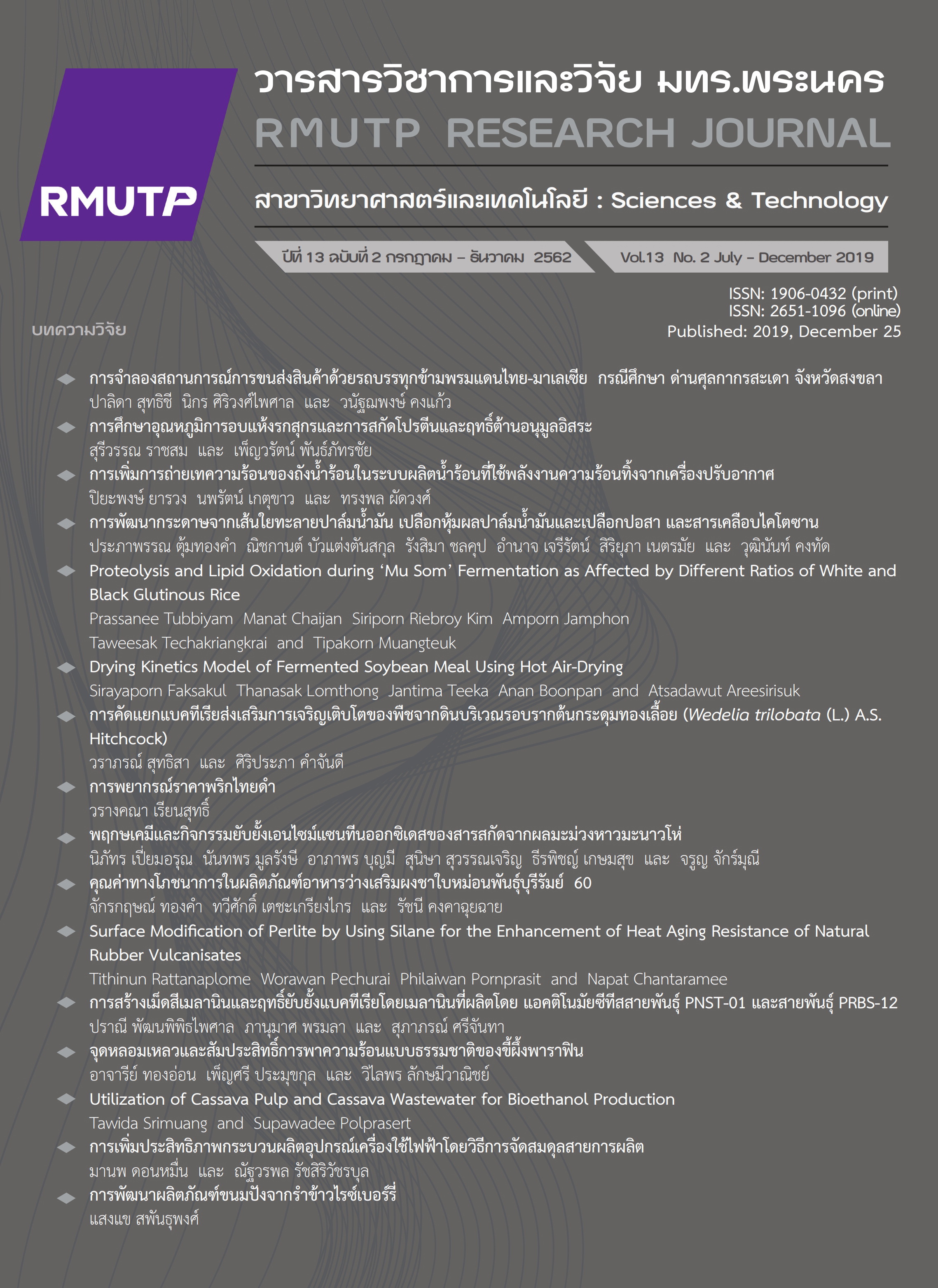Increasing Efficiency of the Electrical Appliance Production Process by Line Balancing Method
Main Article Content
Abstract
This research presents a method of line balancing aims to reduce costs for the production process (case studies of electrical appliance manufacturing factories) for solving the problem of production line not keeping up with the demands of customers. The current production line has an efficiency of 58.44%, with a loss of commercial opportunity value of 6,336,000 baht/year. We have proposed two solutions. The first, approach is a method that can be implemented immediately, no need to invest the installation of machinery or equipment to assist for work by using the technique of combination to production line or reducing staff or relocating employees to be appropriate and let all employees have working time that has a similar. The second approach is a mixed approach between investment to expand production lines and have a combination of integration or reduction of staff or relocation of employees to be appropriate to want each work stations to have a similar processing time and the efficiency of the production line is higher.
The results of the first approach found that with a production line efficiency of 78.44%, saving at 277,220 baht/year. Moreover, the second approach can eliminate the loss of trade opportunity 6,336,000 baht/year, with the production line efficiency at 92.11%.
Article Details
References
[2] M. Donmuen, D. Chetchotsak and S. Pathumnakul, “Production Scheduling Methods for Minimizing Electrical Peak Demand Charge,” KKU Engineering Journal, vol. 34, no.5, pp. 563 - 577, Sep. – Oct. 2007.
[3] A. Arcus., “Comsoal: A computer method of sequencing operations for assembly lines,” International Journal of Production Research. vol. 4, pp. 259 – 277, Oct. 1965.
[4] G. Tuncel and S. Topaloglu, “Assembly line balancing with positional constraints, task assignment restrictions and station paralleling: A case in an electronics company,” Comput. Ind. Eng., vol. 64, no. 2, pp. 602–609, Feb. 2013.
[5] J. C. Chen, C. C. Chen, L. H. Su, H. Bin Wu, and C. J. Sun, “Assembly line balancing in garment industry,” Expert Syst. Appl., vol. 39, no. 11, pp. 10073–10081, Sep. 2012.
[6] H. Zupan and N. Herakovic, “Production line balancing with discrete event simulation: A case study,” IFAC-PapersOnLine, vol. 28, no. 3, pp. 2305–2311, 2015.
[7] S. Nallusamy and M. A. Adil Ahamed, “Implementation of Lean Tools in an Automotive Industry for Productivity Enhancement - A Case Study,” Int. J. Eng. Res. Africa, vol. 29, pp. 175–185, 2017.
[8] M. Chueprasert and P. Ongkunaruk, “Productivity improvement based line balancing: A case study of pasteurized milk manufacturer,” Int. Food Res. J., vol. 22, no. 6, pp. 2313–2317, 2015.


